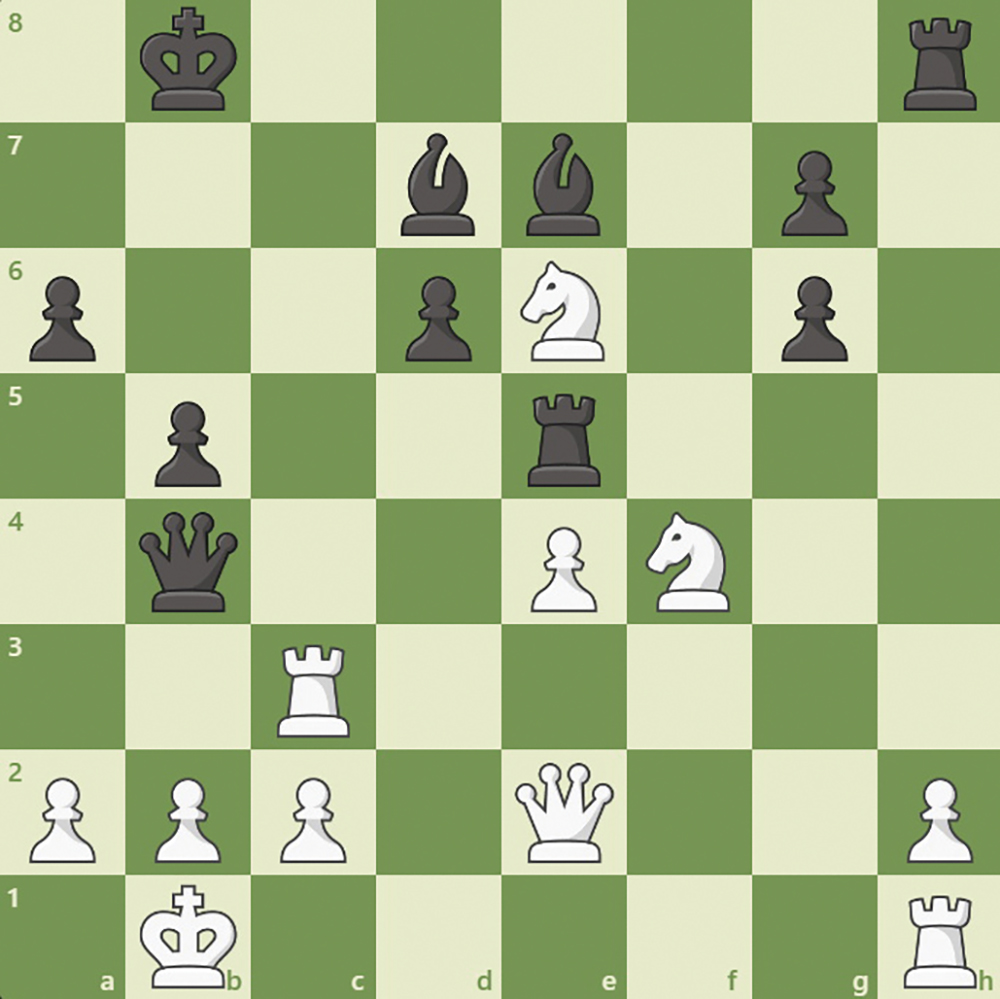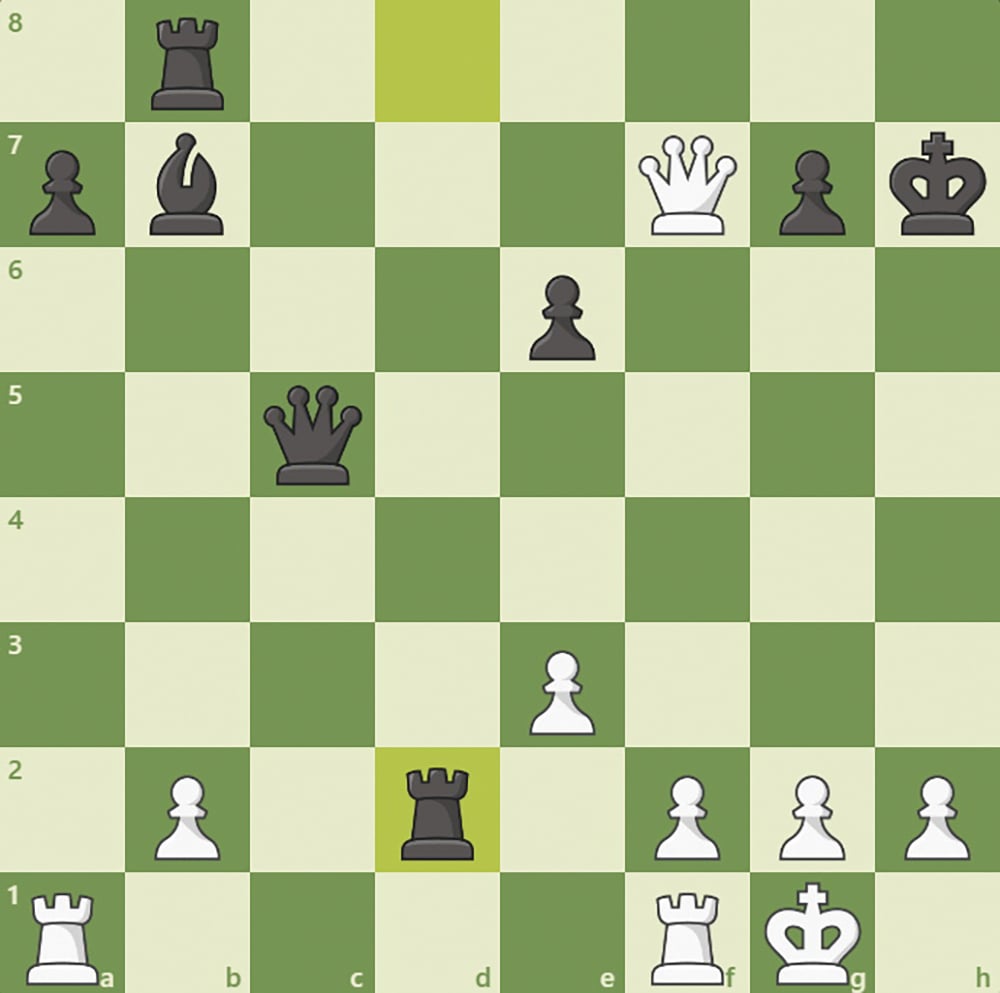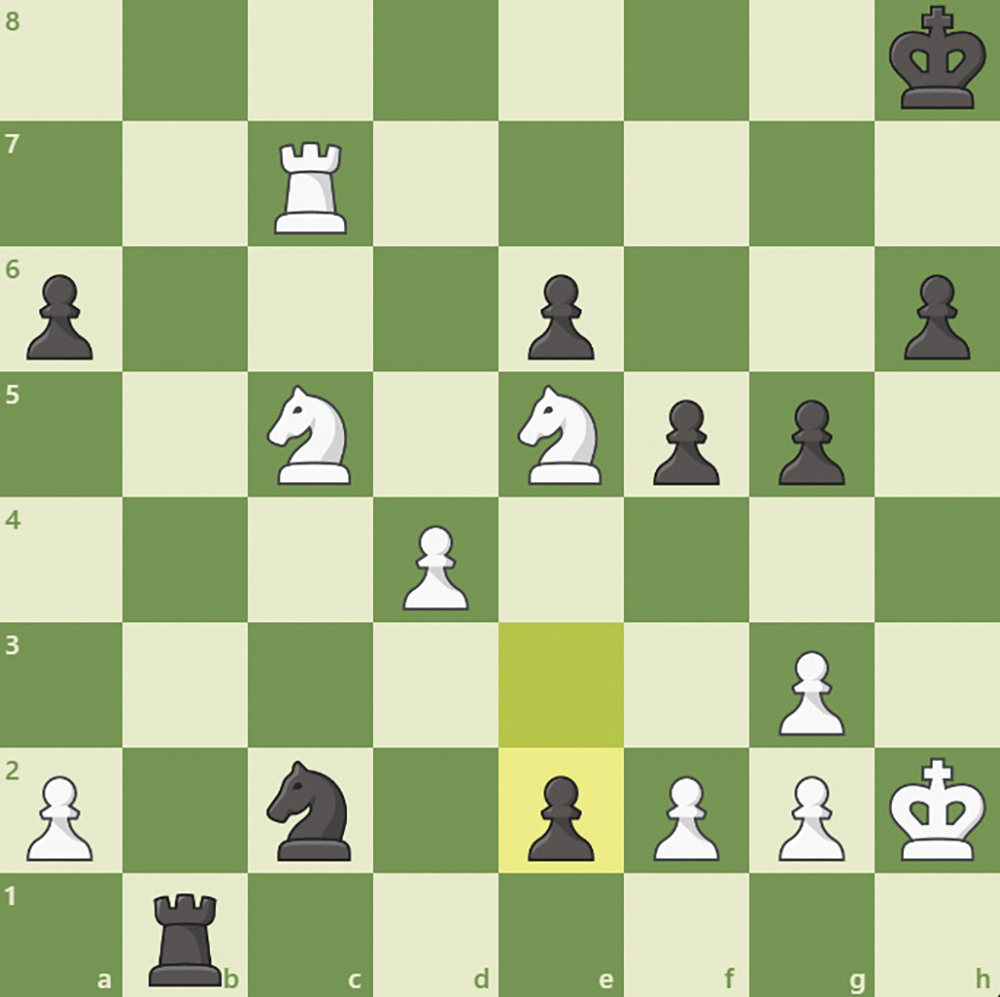
In light of the tragic current events in Israel, unlike most episodes of the Link’s Gambit, which explain particular tactics or ideas, this week’s column will instead delve into the career and chess games of arguably the greatest Jewish Israeli chess player, Boris Gelfand. He was born in 1968 in the city of Minsk, the capital of the Byelorussian Soviet Socialist Republic. He was recognized as a chess talent from an early age and studied with renowned Soviet teachers, attending Tigran Petrosian school. Success came quickly as the young prodigy won the 1984 Belarusian Chess Championship and Soviet Union Junior Championship in 1985. And that’s where we will begin.
Figure 1 is from a game between Gelfand with white and Vasyl Ivanchuk, another soon-to-be top tier grandmaster, at the 1985 Soviet Junior Championship. White’s knight is currently hanging on e6 but the winning idea of the position is to ignore the threat and instead take advantage of the weak dark squares on black’s kingside by playing either 1. Qf2 or 1. Qe3; Gelfund chose the former. If black were to capture on e6, white can actually force mate in 5 after 2. Qb6+ Ka8 3. Rc7 and checkmate are simply unstoppable. Therefore, Ivanchuk played 1… Qxe4 so that after 2. Qb6+, he has 2… Qb7, guardian checkmate. However, not all attacks have to end in checkmate and white is still winning after 3. Qxb7 Kxb7 4. Rc7+, forking the king and bishop. 4… Kb8 5. Rxd7 and the 16 year old Gelfand is up material with a better position. The game concluded 5… g5 6. Rxe7 gxf4.7 Nd4, a nice tactic that defends the e7 rook by virtue of a fork on c6 if black were to take, 7… Rxh2 8. Rxh2, seemingly forgetting that white’s defends against backrank mate on e1, and Ivanchuk resigned.
Gelfand achieved the title of Grandmaster by the age of 21 and became a dominant force in USSR chess, finishing second in the 56th Soviet Chess Championship, and in 1990 attained the third highest rating in the world, only behind Garry Kasparov and Anatoly Karpov. In 1993, he went undefeated in the Biel Interzonal tournament, taking down many of the strongest grandmasters in the world.

The position displayed in Figure 2 is from the 1993 Biel Interzonal with Gelfand with white against future world champion Vishwanathan Anand with black. Anand is up a bishop for two pawns, however, Gelfand is able to take advantage of the weakness of the black king with strategic move 1. Ra4, aiming to transfer the rook to the kingside and threatening checkmate with Rh4. Anand responded with 1… Qg5, attempting to prevent Rh4 but it is not enough. After 2. g3, defending the h4 square, black is rendered helpless to white’s onslaught so after 2… f5 3. Rh4+, Anand is forced to give up his queen for the rook with 3… Qxh4 4. gxh4. The game continued 4… Rd6 5. h5 Be4 6. Qe7 Rb6 7. Qxe5 Re6 8. Qf4 and Anand resigned.
In 1998 Gelfand emigrated to Israel, settling in Rishon Lezion, and became Israel’s highest rated chess player. He continued to triumph in competitive tournaments, defeating an extremely strong field to win the Rubinstein Memorial in 1998, the 2004 Pamplona Tournament and Biel in 2005. He also competed for Israel in the Chess Olympiads from 2000-2014. In 2009, he won the Chess World Cup, ensuring him a place in the candidates’ tournament, the winner of which plays in the World Championship. He reigned victorious in the candidates, making him the challenger to Viswanathan Anand for the World Champion title. The match began with sixth draws leading to the decisive seventh game below.
Figure 3 is the penultimate position from the seventh game of the 2012 World Chess Championship, with Gelfund with the white pieces and Anand with the black pieces. Anand is on the verge of queening his e pawn, and white is entirely incapable of preventing the promotion. However, Gelfund has the incredible move 1. Nxe6, allowing black to play 1… e1=Q because white can then force mate in 2 with (2. Ng6+ Kg8 3. Rg7#). In fact, the only way for black to prevent checkmate is by sacrificing all of his pieces with (2. Rh1+ Kxh1 3. e1=Q+ Kh2 4. Qxe5) and white ends up a rook. Therefore, Anand resigned after Nxe6 was played on the board.
While Gelfund may have taken an early lead in the game above, after equalizing the score immediately, Anand managed to win the rapid tiebreak and retain his World Champion title. Despite the loss, he continued to succeed in competitive chess, taking first place in the 2013 Tal Memorial over the likes of Anand and Magnus Carlsen and achieved his highest rating ever later in the year. The Israeli chess giant has since authored multiple books and continues to excel in top-level chess in spite of his age, having still maintained his place in the top 100 in the world to this day.

Sources:
https://www.chess.com/players/boris-gelfand
https://www.jewishvirtuallibrary.org/boris-gelfand
Ethan Feder is a senior at Yeshivat Frisch, a chess enthusiast, instructor and player. The goal of his column is to teach and discuss chess concepts through example positions, high-level games and relevant puzzles, along with explanations. Feel free to contact him with any questions, suggestions or comments at [email protected].













